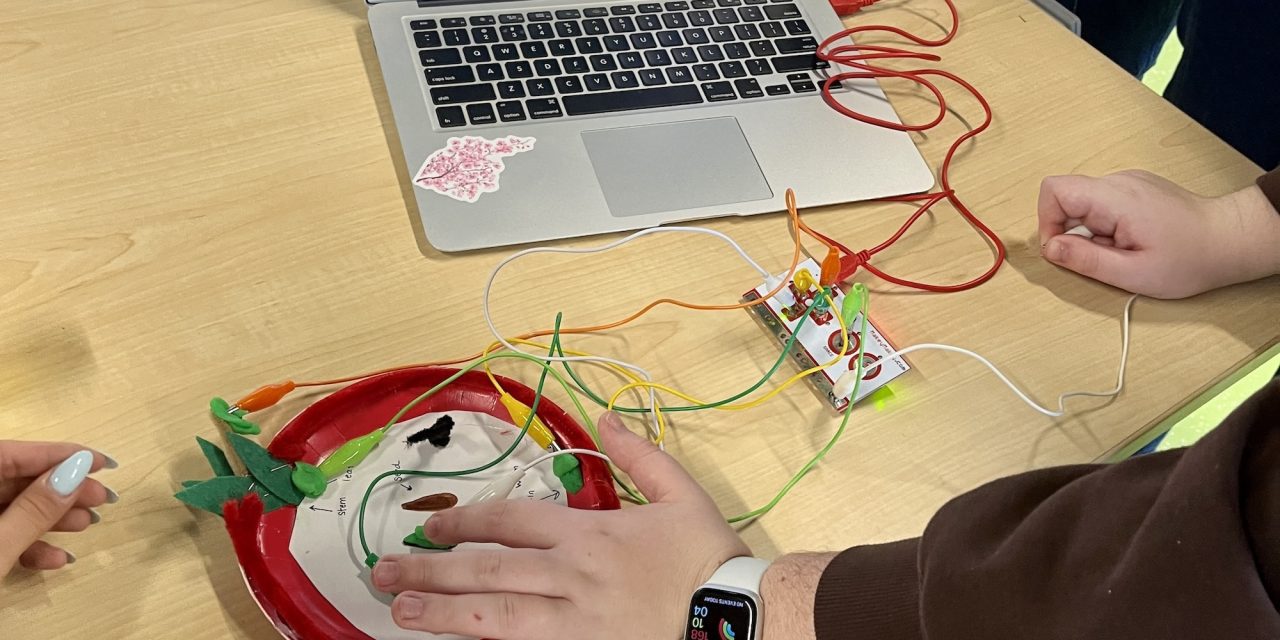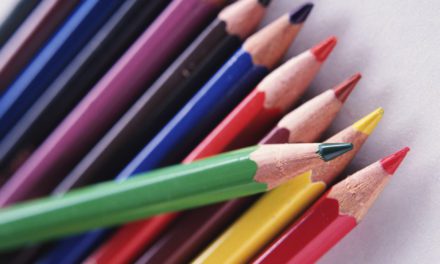This past month LEARN was invited to workshop with four groups of future elementary science teachers at McGill University. Our objective was to make them live STEAM (science, technology, engineering, art and mathematics) in two different activities. We believe mindset is everything, and merely teaching content does not effectively get students to “think like” a scientist, a mathematician, an architect and so on. Lived experiences inspire true learning that students tend never to forget. Now, at the elementary level, science isn’t necessarily taught by specialists, which can make beginning teachers very skittish. They might feel they don’t have the expertise to “teach” science and technology, thus tend to follow whatever textbook was left behind, or try to avoid it at all costs. LEARN decided it would be best for the pre-service teachers to live STEAM by doing, and in turn they would uncover a mindset of wonder, discovery, and yes thinking and doing as scientists do.
Our first activity used the lens of the science concept of states of matter; gas, liquid and solids. We gave certain parameters, but still left the activity open enough for personal creativity and learning styles to flourish.
The Prompt: Create an artbot that can draw on its’ own (hands-free) that represented in its markings one of the states of matter. The idea being that gas would leave a random, spacious marking on paper, liquid more linear but still has space between markings and solid would be represented in a solid line. The students had limited materials (a cup, motor, battery, markers, cup, two wires and a cork), and were on limited time… 25 minutes to complete.
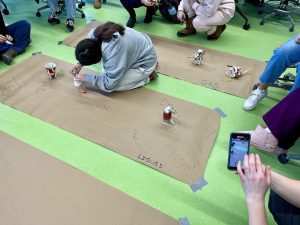
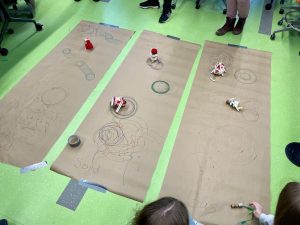
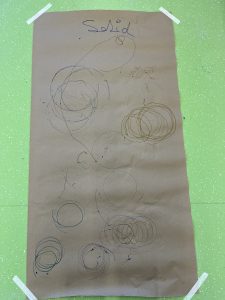
Needless to say, they had to think! But the beauty is every artbot was unique, and the students could experience and witness the subjects in one STEAM activity. Sure it was hard, there was some frustration, trouble shooting, critical thinking, lots of mistakes and yes tons of learning. When we debriefed, they were able to pick out where the science was, where the engineering was etc… the glimmer of a new mindset was planted. Less us, more them!
Our second activity was a little more high tech, as we used the microcontroller, Makey Makey to animate a science model they had previously created in class on a variety of concepts like the life of a worm, and water cycle. We showed them how to hookup a Makey Makey that would take over the keyboard with conductive materials, like play dough, copper tape and pencils, plus we added Scratch so they could record their voices explaining what their model was all about. It was great fun with lots of fun information presented when we did our museum walk.
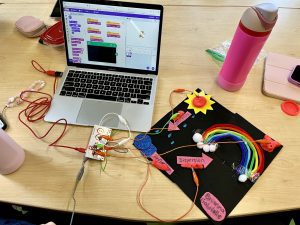
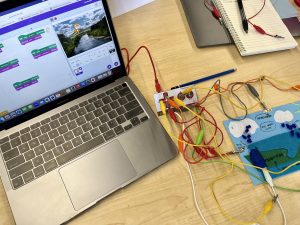
STEAM in action is win win… Teachers and students working together with wonder to figure how things work. It’s authentic, engaging, and about learning to think like an expert! Hard fun.

